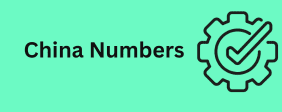What it means for consumers (Airbnb, Lyft, Uber) but what does it mean to corporations? This post will answer that question. Companies that tap into the crowd for instant workers (oDesk or Taskrabbit for business). Or to unlock their idle inventory to it into cash (Liquidspace, Shardesk). To tap into the crowd for new services (Crowdspring, Uservoice). Can benefit significantly from reduced costs. Unlocking new business potential. [Corporations that tap into the crowd. In conclusion, benefit from new product offerings. Unlocked idle inventory. Enables Resiliency And reduced risks] Over the past few months.
I’ve been focused
On the Collaborative Economy, the next phase of social business that involves the sharing of goods and services. In prior posts, I’ve discussed how it has impacted the luxury vertical. And even goods and products. Now let’s explore how it impacts a corporation’s workforce, talent, and resources. To describe the movement, which Denmark Phone Number Data we call the Collaborative Economy, I define it as: “An economic model that is characterized by shared ownership and access between corporations and the crowd.” Here are five examples of how . However, companies can tap the crowd in many business functions.
A company can tap into
An on-demand workforce using Taskrabbit for business. Desk for coding, office admin, writing, and pretty much any other service. A company can instant-lease their unused desks to travelers or other companies who need Bahrain Phone Number List meeting and workspaces furnishings. Using Sharedesk, Liquidspace, Pivotdesk and others. An executive who needs a quick, clean, place to work in New York can quickly access meeting rooms on demand at Breather room or access an Uber to get to a key meeting. Marketers who want to infuse consumer . Therefore, created content that’s trusted and cheap can use Mass Relevance.

